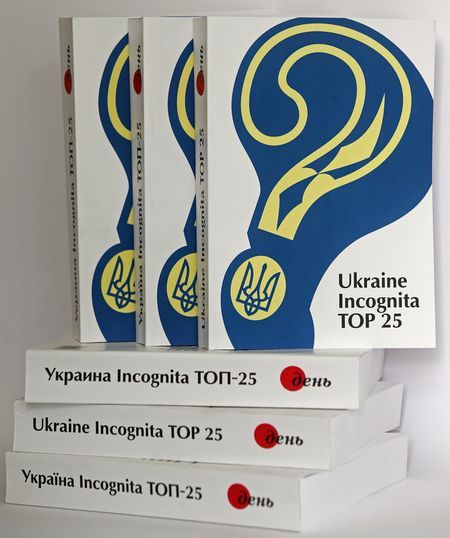Historical memory is a protective shield of the Ukrainians

True to its tradition, Den’s Library publishing project has been delighting its readers with new informative books every year on the eve of the Forum of Publishers in Lviv. 2014 was no exception. We have just published new books as part of our publishing project. They include: Ukraine Incognita. Top-25, published in three languages – Ukrainian, English, and Russian – and containing 25 articles on the history and culture of Ukraine which were published earlier in Den and are highly relevant at the moment; a new revised edition of Klara Gudzyk’s Apocrypha, presenting selected works of a brilliant Ukrainian journalist who worked for 15 years for Den and fully revealed her rare talent there (the first edition of the collection was published in 2005); and finally the photo album People of the Maidan: a Chronicle, allowing the reader to better understand through the images of living people, both heroes and ordinary, regular protesters, the nature and causes of the tectonic events which have changed the course of Ukrainian history in the winter of 2013-14.
What unites these books, which are seemingly so disparate in content? What is the common core that unites all three publications together? This core is not immediately visible, but it certainly exists. It has to do with the historical path of Ukraine to Europe, to its civilizational home, with achievements and tragedies on this centuries-long path. However, why the only alternative path has always been, 500, and 100, and 50 years ago, and, most importantly, today, a tyrannical Eurasianism of the Stalin-Putin style? That Eurasianism treats Ukraine, if it wants to be a separate people, a free and nationally conscious society, as an a priori enemy, a deadly danger, as a challenge that they need to wage a war of destruction on. That is why Muscovite-Imperial-Soviet-Putinist government institutions have stolen our native historical name of Rus’ and have distorted our history, denying Ukraine the right to make its free historical choice. That is why Ukraine’s path to Europe has no alternative. It is disappearance and death that lay in another direction.
However, the dramatism of the situation is that Europe, too, did not hear and did not know (and even did not want to know) us throughout centuries. Our northern neighbor took care of that, walling out our culture and spirituality from their contacts with the Western world as much as it could. That is why the mission of the first of the three books’ English version is to introduce dramatic and courageous Ukrainian history to the European reader in all its aspects, ranging from achievements and times of greatness to defeats, and, most importantly, European aspirations. Gudzyk’s book is actually about that as well, written by the unique journalist who had exceptionally deep knowledge of spiritual and religious life in Ukraine, both in the centuries past and at the beginning of the 3rd millennium. People who died for a European Ukraine are depicted in the photo album People of the Maidan: a Chronicle.
Den/The Day’s editor-in-chief Larysa Ivshyna often emphasizes one thought, very important for all of us: we, the Ukrainians, will win, because we are standing on the adamant Ukrainian Shield. This shield can fend off any enemy. Sources of its strength and invincibility are in the historical memory of the nation. The new books of Den’s Library are dealing with these very issues.






